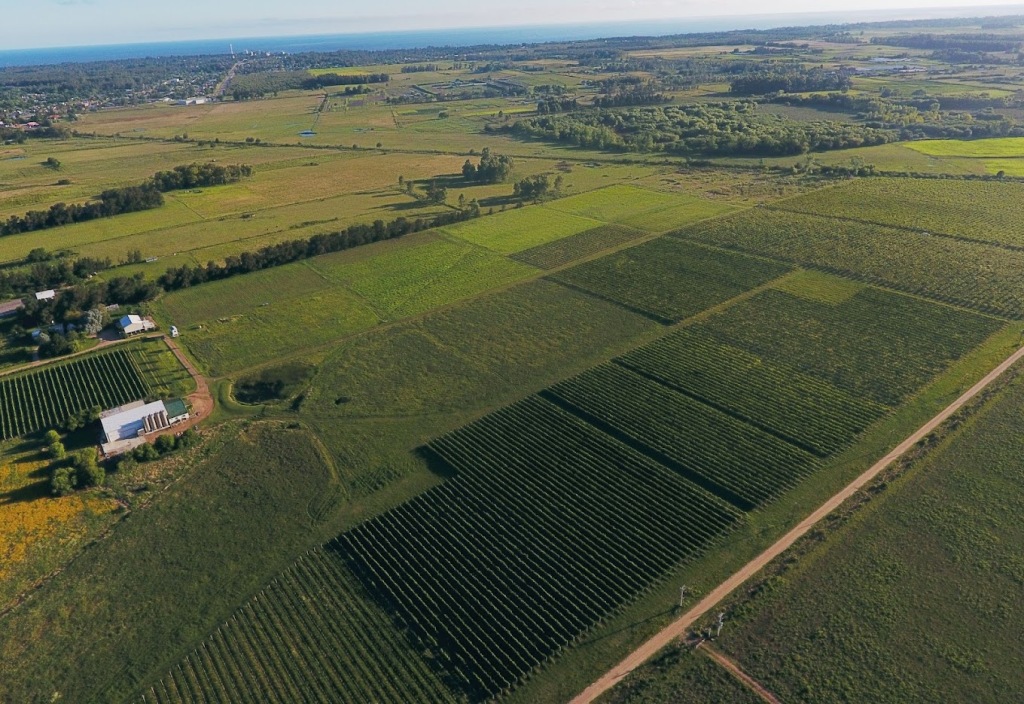On 4th April 2024 the Wine in Nottingham Group met for the latest tasting of the 2024 season. The theme of this tasting was “The Wines of Uruguay”.
I have already outlined the background for this tasting in the previous post, you can (re)read it by clicking back – so I won’t repeat it here. Suffice to say the wines tasted were chosen as a good quality reflection of what’s available from this emerging country.
Here are my notes:

ALBARIÑO RESERVE 2022 (BODEGA GARZÓN) – 12.5 % – ND John Wines £19
This showed some floral notes on the nose, as well as the usual peach/pear fruit notes. The palate has mineral background to a quite rich stone-fruit centre, with increasing citric, lip-smacking acidity. A good full-ish, food-friendly version of the grape, which by proximity to its tasting last August invites comparisons with the “La Trucha” Albariño. This is indeed similar, and very good – but perhaps not quite sharing La Trucha’s fineness or subtlety.
Ratings: Quality: 16.5/20 Value: 16/20
“ESTIVAL” WHITE 2020 (PABLO FALLABRINO) – 13.5 % – Wadebridge Wines £20
This blend of late harvested Gewürztraminer (60%) and Muscat (10%) with early picked Chardonnay (30%) has a very lemon scented, even lemon zest, attack presumably from the Chardonnay. Under that and a little recessed are the sort of ginger and floral hints one would expect from Gewürztraminer. The palate is a little unintegrated and has some lychee softness in the middle, but builds back to a lemon-peel freshness at the finish. This wine is discomforted by appearing after the Albariño, and tasted alone the next day has integrated a little more and appears fresher…
Ratings: Quality: 15.5/20 Value: 15/20
MARSELAN RESERVE 2021 (BODEGA GARZÓN) – 12.5 % – ND John Wines £19
The Marselan grape, a Cab. Sauv. x Grenache – newly permitted in Bordeaux, has an open nose with herby hints (rosemary?) and red fruit. The palate has blackberry and sour red plum fruit with fine tannins and warm finish with a mineral and acidic backbone. Rather a nice wine and more satisfying, IMO, than a similarly priced Merlot – whose structural and viticultural qualities it might replace on a Bordeaux Estate? The next day it too was better integrated and resolved, allowing a bit more varietal distinctiveness. Good.
Ratings: Quality: 16.5/20 Value: 16/20
“NOTOS” 2020 (PABLO FALLABRINO) – 13 % – Wadebridge Wines £20
Well – this Nebbiolo (with 10% Tannat) had fresh and dried berries on the nose together with (and I don’t think this is prejudgment) Tar and Roses!!! The palate is very dry but there is supple and subtle fruit underpinned with a long strand of fresh acidity and fine tannins lifting the wine into a complex finish. Lovely, not quite Barolo, but showing 90% of that wine’s attractions for 1/2 (?) price. The favourite on the night and mine too…
Ratings: Quality: 17/20 Value: 16.5/20
TANNAT RESERVE 2021 (BODEGA GARZÓN) – 14% – ND John Wines £19
This very dark, vin noir has aromas of plums and a raspberry note with a spicy hint. The palate has a tannic profile distinctive of the grape but riper and rounder versions of it than found here in Uruguay (or in SW France) 15 years ago. This allows the fruit profile – the same plums and raspberry – to show too. In fact the wine reminded me of a (younger) 100% Tannat I tasted in Salies-de-Béarn (at Domaine Lapeyre et Guilhemas) last October. That said this is a little four-square at the moment, maybe needing another 2 or 3 years?
Ratings: Quality: 16/20 Value: 15.5/20
SINGLE VINEYARD PETIT VERDOT 2020 (BODEGA GARZÓN) – 14.5 % – ND John Wines £27
This highly coloured wine has a spirity, even downright alcoholic, nose which masks a hint of blueberry fruit. The palate has a similar profile with Italianate flavours: leather and spice – masking, rather than complementing hints of blueberry fruit and wood. The woody sense is textural rather than the effect of oak: the wine is in 4th-use large casks for 12-18 months. This wine is very big, with big separate components achieving a long and impressive wine that somehow wasn’t very pleasurable. A day later there was some integration and maybe another half-point of pleasure. One can see what a small amount adds to a Bordeaux blend, but the least interesting red IMO, and quite expensive.
Ratings: Quality: 15.5/20 Value: 14.5/20
A rather interesting tasting I thought, and in the opinion of the group too. A range of well made wines with distinctive character and – in the main – showing quality and interest throughout. Certainly in my mind it aroused an interest in the capability of Uruguay in the wine market and a curiosity to taste further…. Arinarnoa anyone?
À Bientôt

































